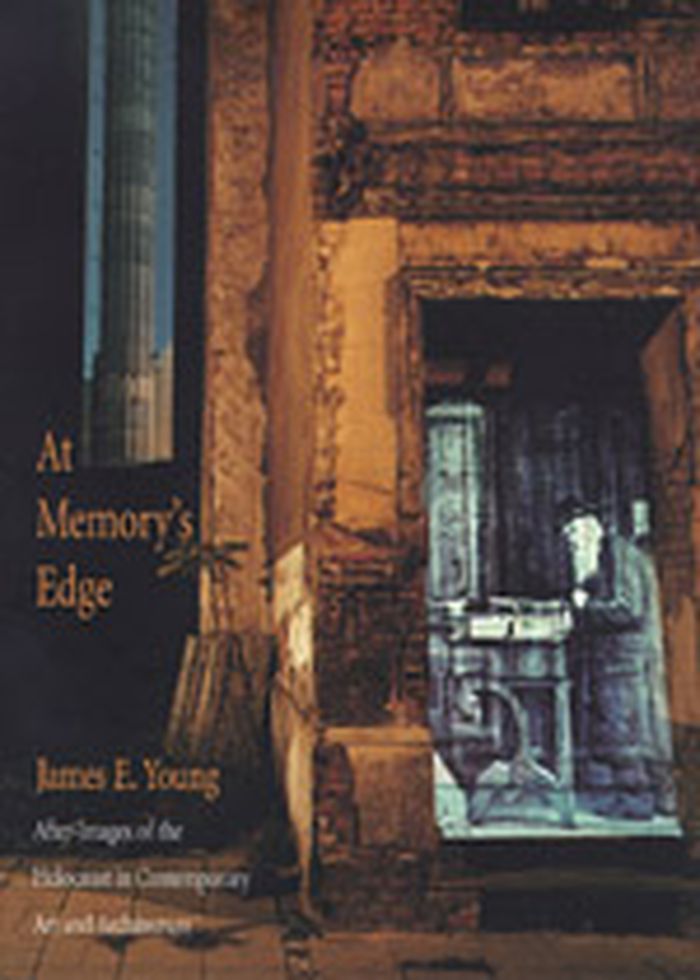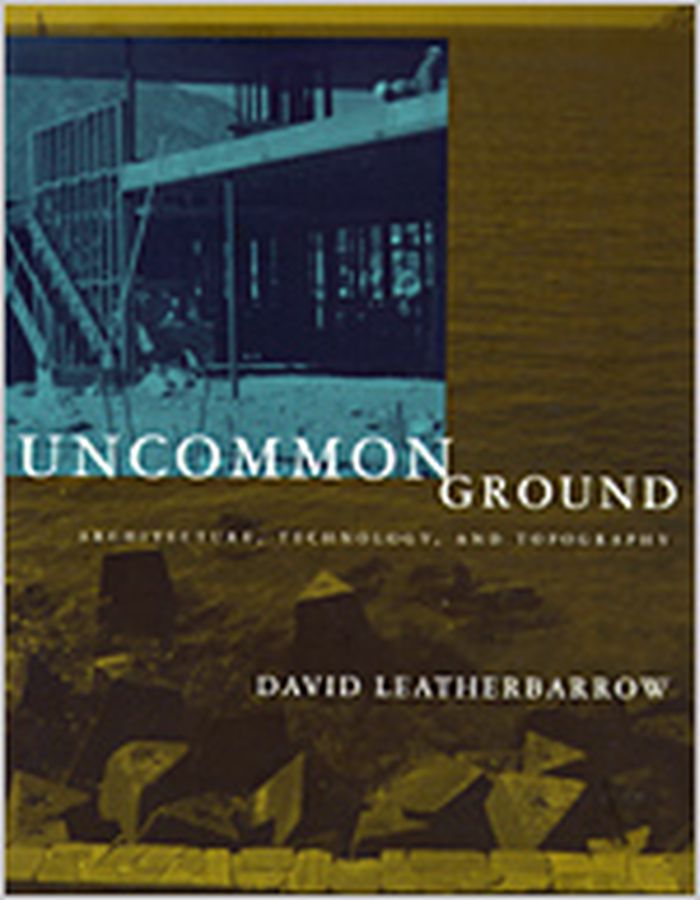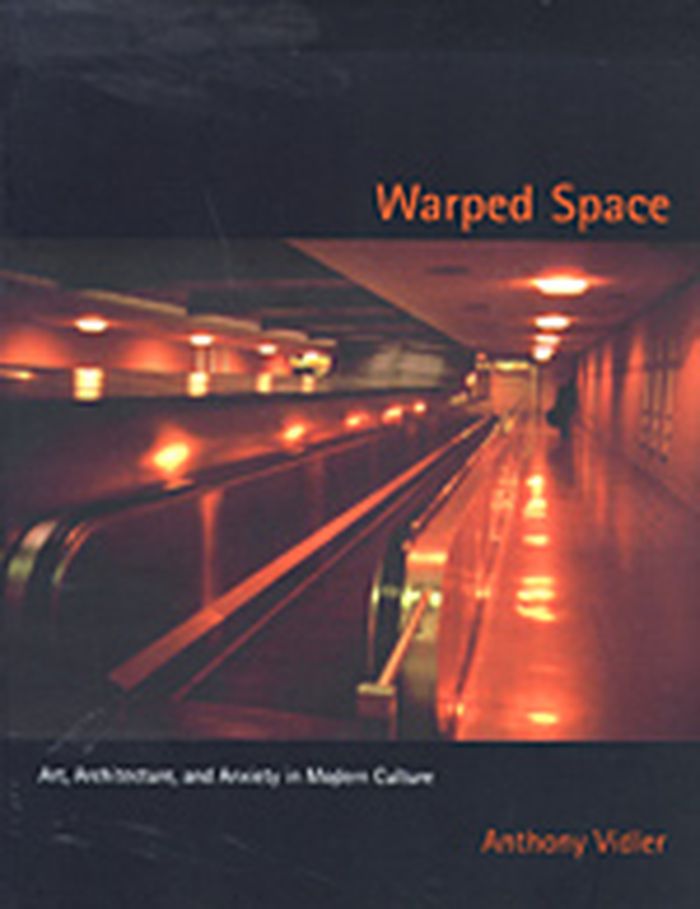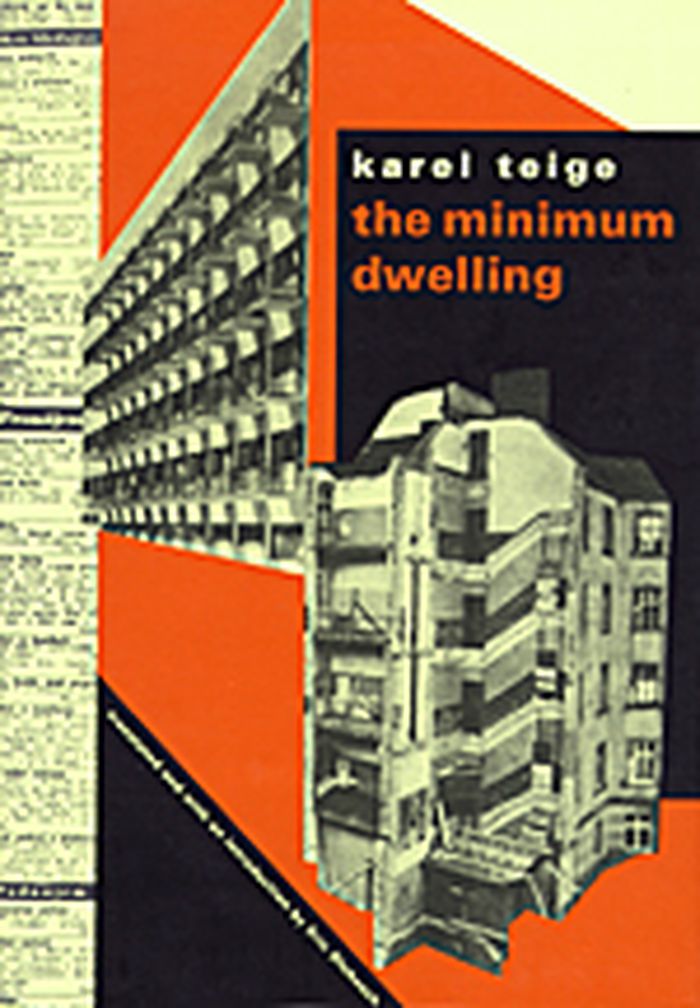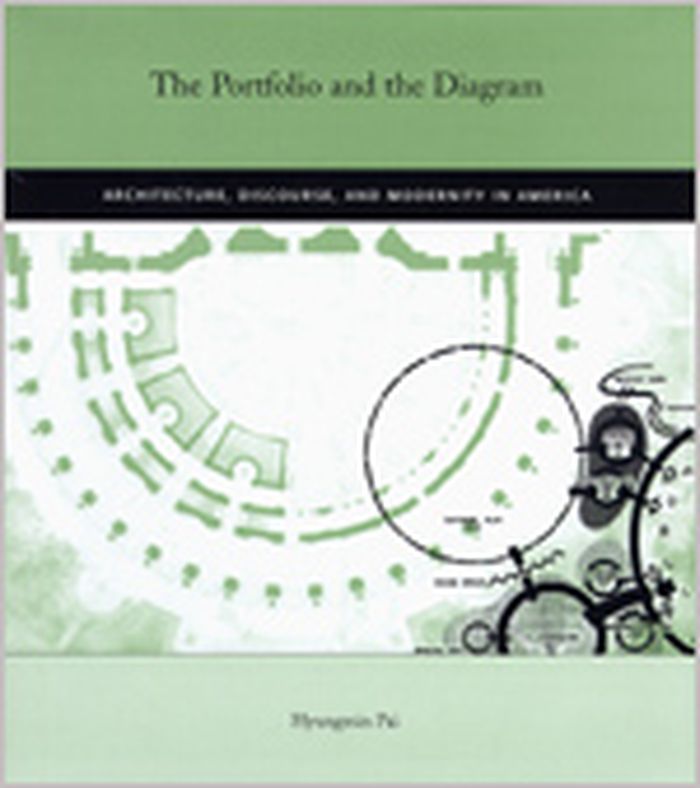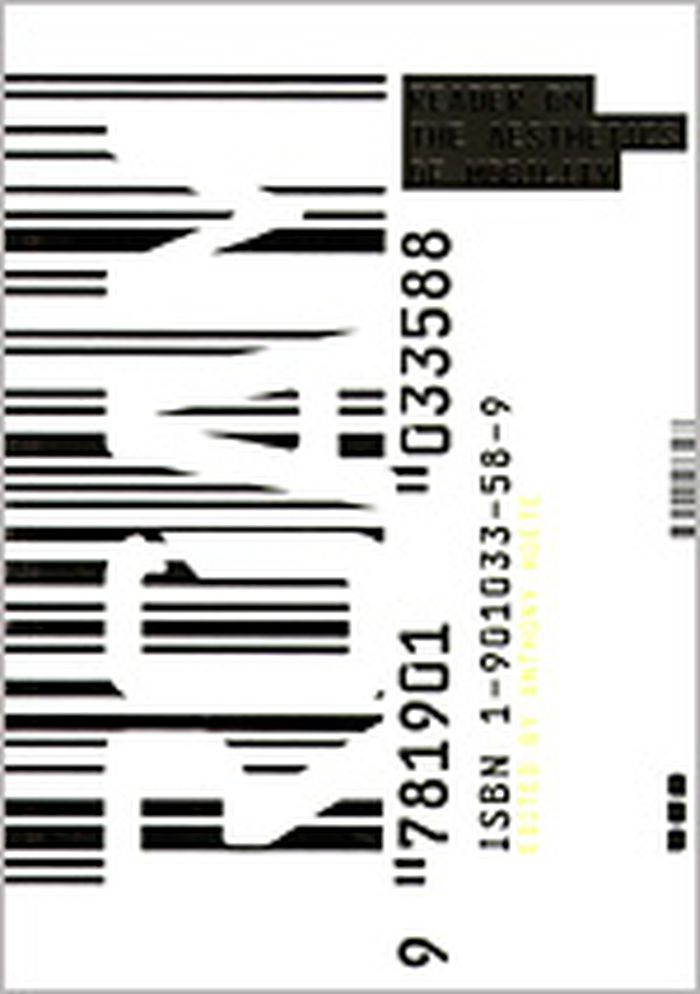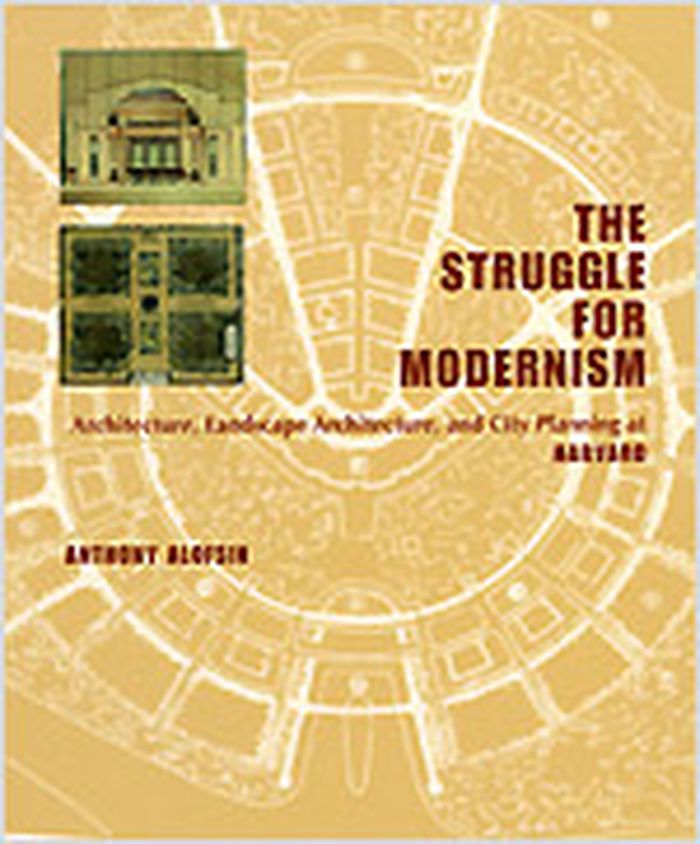$28.50
(disponible sur commande)
Résumé:
How should Germany commemorate the mass murder of Jews once committed in its name? James E. Young--the only foreigner and the only Jew to serve on the German commission to select a design for a national Holocaust memorial--tells the inside story of this enormously controversial project. Young also inquires deeply into the moral and aesthetic questions surrounding(...)
At memory's edge : after-images of the Holocaust in contemporary art and architecture
Actions:
Prix:
$28.50
(disponible sur commande)
Résumé:
How should Germany commemorate the mass murder of Jews once committed in its name? James E. Young--the only foreigner and the only Jew to serve on the German commission to select a design for a national Holocaust memorial--tells the inside story of this enormously controversial project. Young also inquires deeply into the moral and aesthetic questions surrounding artistic representations of the Holocaust produced by young artists who themselves did not experience it.
Théorie de l’architecture
$79.95
(disponible sur commande)
Résumé:
Although both are central to architecture, siting and construction are often treated as separate domains. In "Uncommon Ground", David Leatherbarrow illuminates their relationship, focusing on the years between 1930 and 1960, when utopian ideas about the role of technology in (...)
Théorie de l’architecture
mai 2002, Cambridge, Mass.
Uncommon ground : architecture, technology. and topography
Actions:
Prix:
$79.95
(disponible sur commande)
Résumé:
Although both are central to architecture, siting and construction are often treated as separate domains. In "Uncommon Ground", David Leatherbarrow illuminates their relationship, focusing on the years between 1930 and 1960, when utopian ideas about the role of technology in building gave way to an awareness of its disruptive impact on cities and culture. He examines the work of three architects, Richard Neutra, Antonin Raymond, and Aris Konstantinidis, who practiced in the United States, Japan, and Greece respectively. Leatherbarrow rejects the assumption that buildings of the modern period, particularly those that used the latest technology, were designed without regard to their surroundings. Although the prefabricated elements used in the buildings were designed independent of siting considerations, architects used these elements to modulate the environment. Leatherbarrow shows how the role of walls, the traditional element of architectural definition and platform partition, became less significant than that of the platforms themselves, the floors, ceilings, and intermediate levels. He shows how frontality was replaced by the building's four-sided extension into its surroundings, resulting in frontal configurations previously characteristic of the back. Arguing that the boundary between inside and outside was radically redefined, Leatherbarrow challenges cherished notions about the autonomy of the architectural object and about regional coherence. Modern architectural topography, he suggests, is an interplay of buildings, landscapes, and cities, as well as the humans who use them. The conflict between technological progress and cultural continuity, Leatherbarrow claims, exists only in theory, not in the real world of architecture. He argues that the act of building is not a matter of restoring regional identity by re-creating familiar signs, but of incorporating construction into the process of topography's perpetual becoming.
Théorie de l’architecture
$39.95
(disponible sur commande)
Résumé:
Beginning with agoraphobia and claustrophobia in the late nineteenth century, followed by shell shock and panic fear after World War I, phobias and anxiety came to be seen as the mental condition of modern life. They became incorporated into the media and arts, in particular the (...)
Warped space : art, architecture, and anxiety in modern culture
Actions:
Prix:
$39.95
(disponible sur commande)
Résumé:
Beginning with agoraphobia and claustrophobia in the late nineteenth century, followed by shell shock and panic fear after World War I, phobias and anxiety came to be seen as the mental condition of modern life. They became incorporated into the media and arts, in particular the spatial arts of architecture, urbanism, and film. This "spatial warping" is now being reshaped by digitalization and virtual reality. Anthony Vidler is concerned with two forms of warped space. The first, a psychological space, is the repository of neuroses and phobias. This space is not empty but full of disturbing forms, including those of architecture and the city. The second kind of warping is produced when artists break the boundaries of genre to depict space in new ways. Vidler traces the emergence of a psychological idea of space from Pascal and Freud to the identification of agoraphobia and claustrophobia in the nineteenth century to twentieth-century theories of spatial alienation and estrangement in the writings of Georg Simmel, Siegfried Kracauer, and Walter Benjamin. Focusing on current conditions of displacement and placelessness, he examines ways in which contemporary artists and architects have produced new forms of spatial warping. The discussion ranges from theorists such as Jacques Lacan and Gilles Deleuze to artists such as Vito Acconci, Mike Kelley, Martha Rosler, and Rachel Whiteread. Finally, Vidler looks at the architectural experiments of Frank Gehry, Coop Himmelblau, Daniel Libeskind, Greg Lynn, Morphosis, and Eric Owen Moss in the light of new digital techniques that, while relying on traditional perspective, have radically transformed the composition, production, and experience of architecture.
Théorie de l’architecture
The minimum dwelling
$96.00
(disponible en magasin)
Résumé:
Karel Teige (1900–1951), one of the most important figures of avant-garde modernism of the 1920s and 1930s, influenced virtually every area of art, design, and urban thinking in his native Czechoslovakia. His "Minimum dwelling", originally published in Czech in 1932, and appearing now for the first time in English, is one of the landmark architectural books of the(...)
The minimum dwelling
Actions:
Prix:
$96.00
(disponible en magasin)
Résumé:
Karel Teige (1900–1951), one of the most important figures of avant-garde modernism of the 1920s and 1930s, influenced virtually every area of art, design, and urban thinking in his native Czechoslovakia. His "Minimum dwelling", originally published in Czech in 1932, and appearing now for the first time in English, is one of the landmark architectural books of the twentieth century. "The minimum dwelling" is not just a book on architecture, but also a blueprint for a new way of living. It calls for a radical rethinking of domestic space and of the role of modern architecture in the planning, design, and construction of new dwelling types for the proletariat. Teige shows how Gropius, Le Corbusier, Mies van der Rohe, and others designed little more than new versions of baroque palaces, mainly for the new financial aristocracy. Teige envisioned the minimum dwelling not as a reduced version of a bourgeois apartment or rural cottage, but as a wholly new dwelling type built on the cooperation of architects, sociologists, economists, health officials, physicians, social workers, politicians, and trade unionists. The book covers many subjects that are still of great relevance. Of particular interest are Teige’s rejection of traditional notions of the kitchen as the core of family-centered plans and of marriage as the foundation of modern cohabitation. He describes alternative lifestyles and new ways of cohabitation of sexes, generations, and classes. The detailed programmatic chapters on collective housing remain far ahead of current thinking, and his comments on collective dwelling presage communal living experiments of the 1960s and 1970s, as well as the communal facilities in contemporary condominium buildings and retirement communities. Translated and introduced by Eric Dluhosch.
Théorie de l’architecture
$79.95
(disponible sur commande)
Résumé:
"The Portfolio and the Diagram" is about the changing ways architects see, read, and use the words and images of architectural publications. It begins with an outline of the academic discipline and the mimetic practice of the portfolio, established in America during the late nineteenth century. World War I triggered a historical process that resulted in the demise of the(...)
Théorie de l’architecture
avril 2002, Cambridge, Massachusetts
The portfolio and the diagram : architecture, discourse, and modernity in America
Actions:
Prix:
$79.95
(disponible sur commande)
Résumé:
"The Portfolio and the Diagram" is about the changing ways architects see, read, and use the words and images of architectural publications. It begins with an outline of the academic discipline and the mimetic practice of the portfolio, established in America during the late nineteenth century. World War I triggered a historical process that resulted in the demise of the portfolio and the emergence of the discourse of the diagram. The Beaux Arts-trained architects had fashioned their discipline through the meticulous object-centered images of the portfolio. The discourse of the diagram provided a new range of possibility in the architect’s relation to words, images, and buildings. More than the diagram itself, more than the province of narrow-minded functionalists, the discourse of the diagram is a complex formation of texts, concepts, and modes of representation. Concerned less with constructing a new kind of modernism than with understanding the boundaries and structures of modernity, the book is a history of modern architecture as a discursive practice and its striving to become a viable discipline.
Théorie de l’architecture
$40.50
(disponible sur commande)
Résumé:
ROAM is an unconventional academic reader, looking at 'the Aesthetics of Mobility'. Under five themes - narrative, representation, glocalisation, telematics, velocity - ideas around what it is to 'roam' are explored, from theoritical texts to magazine style snippets of information. Against an architectural understanding of urban spaces and mobility. ROAM also engages with(...)
Reader on the aesthetics of mobility
Actions:
Prix:
$40.50
(disponible sur commande)
Résumé:
ROAM is an unconventional academic reader, looking at 'the Aesthetics of Mobility'. Under five themes - narrative, representation, glocalisation, telematics, velocity - ideas around what it is to 'roam' are explored, from theoritical texts to magazine style snippets of information. Against an architectural understanding of urban spaces and mobility. ROAM also engages with discourses from art, cultural studies, design and politics. In line with its unconventional approach, the texts in ROAM are designed to be read at different speeds, so that design projects are interspliced amongst essays and soundbites, provoking the reader with new views about our increasingly mobilised society.
Théorie de l’architecture
livres
Essai sur l'art
$39.95
(disponible sur commande)
Résumé:
Si aujourd'hui, grâce à des traductions tardives, parues jusqu'à un siècle après leur version originale, Riegl et Panofsky ont enfin été intégrés en France dans l'histoire et la réflexion sur l'art, il est stupéfiant de constater que l'oeuvre qui est à l'origine de leur relativisme historique et de leur conception des arts visuels comme mode créatif et spécifique de la(...)
Essai sur l'art
Actions:
Prix:
$39.95
(disponible sur commande)
Résumé:
Si aujourd'hui, grâce à des traductions tardives, parues jusqu'à un siècle après leur version originale, Riegl et Panofsky ont enfin été intégrés en France dans l'histoire et la réflexion sur l'art, il est stupéfiant de constater que l'oeuvre qui est à l'origine de leur relativisme historique et de leur conception des arts visuels comme mode créatif et spécifique de la connaissance demeure totalement ignorée dans notre pays. C'est assez dire la lacune que vient combler la traduction de trois essais sur l'art de Fiedler, respectivement parus en en 1876, 1878, et 1887. Ceux-ci ne mettent pas seulement en perspective critique l'approche de l'art^par la philosophie antique, puis moderne : ils éclairent aussi les problématiques de notre époque dans les deux domaines de la peinture et de l'architecture.
livres
mai 2002, Besançon
Théorie de l’architecture
La production de l'espace
$39.95
(disponible sur commande)
Résumé:
Les écrits descriptifs d'espaces, de paysages, de campagnes et de villes ne se comptent plus... Sont-ils une connaissance de l'espace? Non, répond Lefèbvre qui tente ici de montrer l'unité théorique entre l'espace physique, l'espace mental et l'espace social. Chaque société produit un espace, le sien. La nôtre, forme du néo-capitalisme, a produit l'espace abstrait qui(...)
La production de l'espace
Actions:
Prix:
$39.95
(disponible sur commande)
Résumé:
Les écrits descriptifs d'espaces, de paysages, de campagnes et de villes ne se comptent plus... Sont-ils une connaissance de l'espace? Non, répond Lefèbvre qui tente ici de montrer l'unité théorique entre l'espace physique, l'espace mental et l'espace social. Chaque société produit un espace, le sien. La nôtre, forme du néo-capitalisme, a produit l'espace abstrait qui contient le " monde de la marchandise ", sa logique et ses stratégies à l'échelle mondiale en même temps que la puissance de l'argent et celle de l'Etat politique. Cet espace abstrait s'appuie sur les énormes réseaux des banques, des centres d'affaires, etc. Et aussi l'espace des autoroutes, des aérodromes, des centres d'informations et de communication. Dans cet espace, la ville, berceau de l'accumulation, lieu de la richesse, sujet de l'histoire, centre de l'espace historique a éclaté. Il s'agit d'en apprécier les conséquences... Il y a vingt-cinq ans paraissait la première édition de ce livre, devenu aujourd'hui un classique tant en France qu'à l'étranger où cet ouvrage a été beaucoup traduit.
Théorie de l’architecture
The struggle for modernism : architecture, landscape architecture, and city planning at Harvard
$87.00
(disponible en magasin)
Résumé:
A history of modernism in the teaching of architecture, landscape architecture, and city planning at Harvard. This book tells how modernism evolved in the celebrated design school in America. Tracing developments at Harvard, whose Graduate School of Design was home from 1937 to 1952 of Bauhaus founder Walter Gropius, it shows that America had initiated its own modern(...)
Théorie de l’architecture
septembre 2001, New York / London
The struggle for modernism : architecture, landscape architecture, and city planning at Harvard
Actions:
Prix:
$87.00
(disponible en magasin)
Résumé:
A history of modernism in the teaching of architecture, landscape architecture, and city planning at Harvard. This book tells how modernism evolved in the celebrated design school in America. Tracing developments at Harvard, whose Graduate School of Design was home from 1937 to 1952 of Bauhaus founder Walter Gropius, it shows that America had initiated its own modern agenda before the arrival of the European modernist ideology. Anthony Alofsin is Roland Roessner Centennial Professor of Architecture at the University of Texas at Austin.
Théorie de l’architecture
livres
Some assembly required
$25.95
(disponible sur commande)
Résumé:
In this new collection, Sorkin reviews the state of contemporary architecture and surveys the dramatic changes in the urban environment of the past decade. From New York to New Delhi, from Shanghai to Cairo, Sorkin offers a sweeping assessment of the impact of globalization, environmental degradation, electronic media, rapid growth, and the legacies of modernist planning.(...)
Some assembly required
Actions:
Prix:
$25.95
(disponible sur commande)
Résumé:
In this new collection, Sorkin reviews the state of contemporary architecture and surveys the dramatic changes in the urban environment of the past decade. From New York to New Delhi, from Shanghai to Cairo, Sorkin offers a sweeping assessment of the impact of globalization, environmental degradation, electronic media, rapid growth, and the legacies of modernist planning. Whether laying out, manifesto-like, eleven necessary tasks for urban design, providing a fresh take on the Disneyfication of Times Square, grappling with sprawl, or blasting the nostalgic prescriptions of "new urbanist" communities, Sorkin makes a compelling argument for an architecture and urbanism firmly grounded in both artistic expression and social purpose.
livres
novembre 2001, Minneapolis
Théorie de l’architecture
